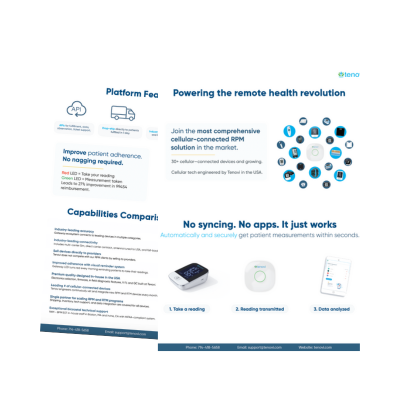Healthcare costs are rising, chronic conditions are accelerating, and members expect more personalized care. Payers and remote patient monitoring (RPM) together create one of the most effective strategies to lower costs, improve outcomes, and strengthen quality measures across populations. By proactively engaging members in their homes with simple, connected devices, payers can help reduce hospitalizations, drive earlier interventions, and create sustainable cost savings while meeting CMS and commercial quality benchmarks.
Early Identification Saves Costs
When payers and remote patient monitoring come together, gaps in care are closed before they become expensive problems. High-risk members who often go undiagnosed or unmanaged can be identified earlier, connected to connected health devices at home, and quickly triaged to care teams. This shift from reactive to proactive care reduces emergency visits, lowers readmission rates, and prevents complications that strain both budgets and member well-being. In fact, one study showed RPM reduced heart failure costs by up to 52% while improving outcomes.
Strengthen Member Engagement
For payers and remote patient monitoring programs, engagement is the foundation of ROI. Members equipped with easy-to-use devices stay consistent in reporting vital signs, creating a steady flow of real-world data for providers. That consistent data fuels care plan adjustments, supports better disease management, and ensures payers see measurable impact in quality scores, risk adjustment accuracy, and long-term cost containment.
The Outcomes
Strong payers and remote patient monitoring programs have demonstrated:
- Reduced hospitalizations in high-risk populations: A 2024 systematic review examined 29 studies across 16 countries and found that RPM consistently lowered risks of hospital admissions and readmissions, reduced lengths of stay, and decreased outpatient visits and non‑hospital costs.
- Improved A1C control among members with diabetes: A meta-analysis covering 20 randomized controlled trials (median follow-up ~180 days) found RPM led to an average A1C reduction of 0.42% (p = 0.0084) in patients with type 2 diabetes.
- Lower blood pressure in hypertensive patients: Participants enrolled in a structured RPM program saw their average BP fall from 153/84 mm Hg down to 126/75 mm Hg (P < .001). Heart rate also dropped slightly from 73 to 70 bpm.
- Hypertension RPM ROI: A 2025 economic evaluation of a hypertension RPM program reported a positive return on investment (ROI) of 22.2%.
These results directly translate into improved HEDIS and STAR ratings, stronger value-based care performance, and greater member satisfaction, all of which strengthen payer competitiveness. Healthcare is at a tipping point: payers who adopt RPM today gain a clear advantage in both cost control and member outcomes. The technology is working, the regulatory frameworks support reimbursement, and the evidence shows that RPM improves chronic condition management at scale.
Those who hesitate risk higher costs, missed quality bonuses, and member attrition to plans offering better access and more proactive care. Payers and remote patient monitoring together create a model that is preventive, data-driven, and member-first. By investing in RPM, payers can lower expenses, enhance clinical outcomes, and future-proof their role in value-based healthcare.
Want to learn more? Schedule a demo with Tenovi today.




